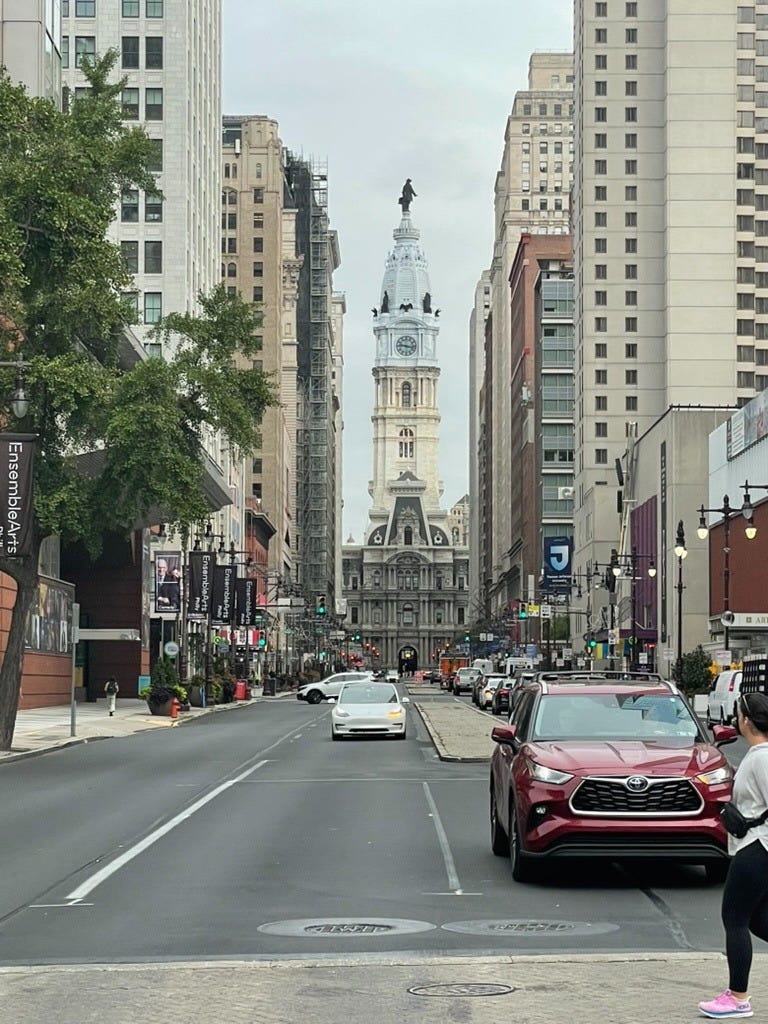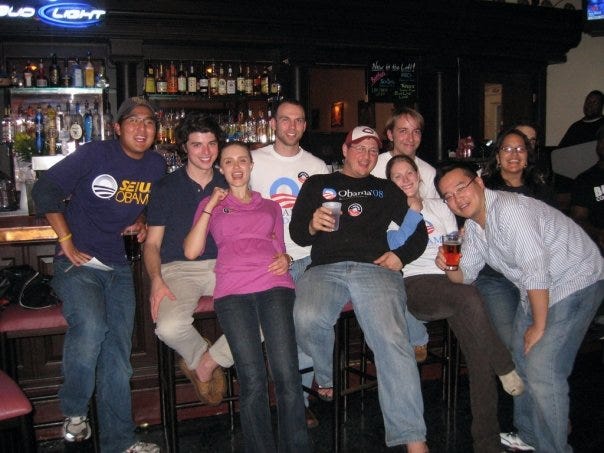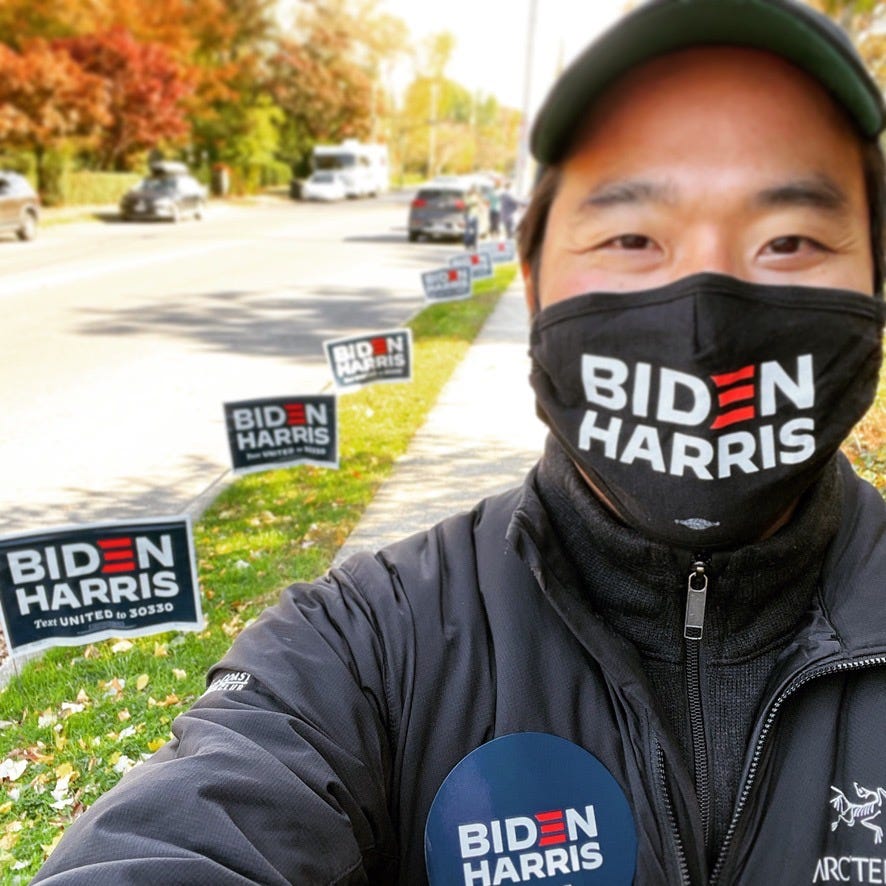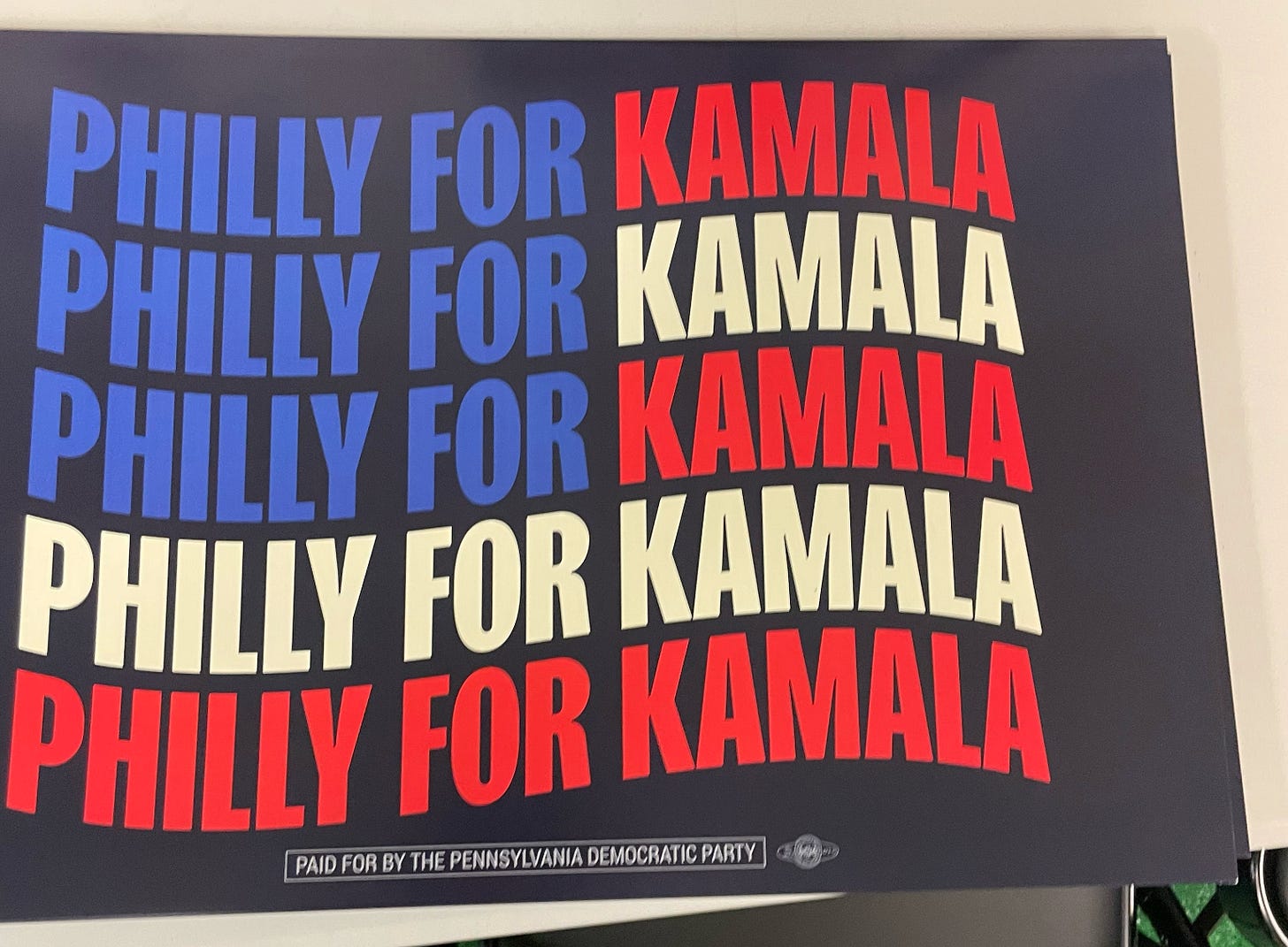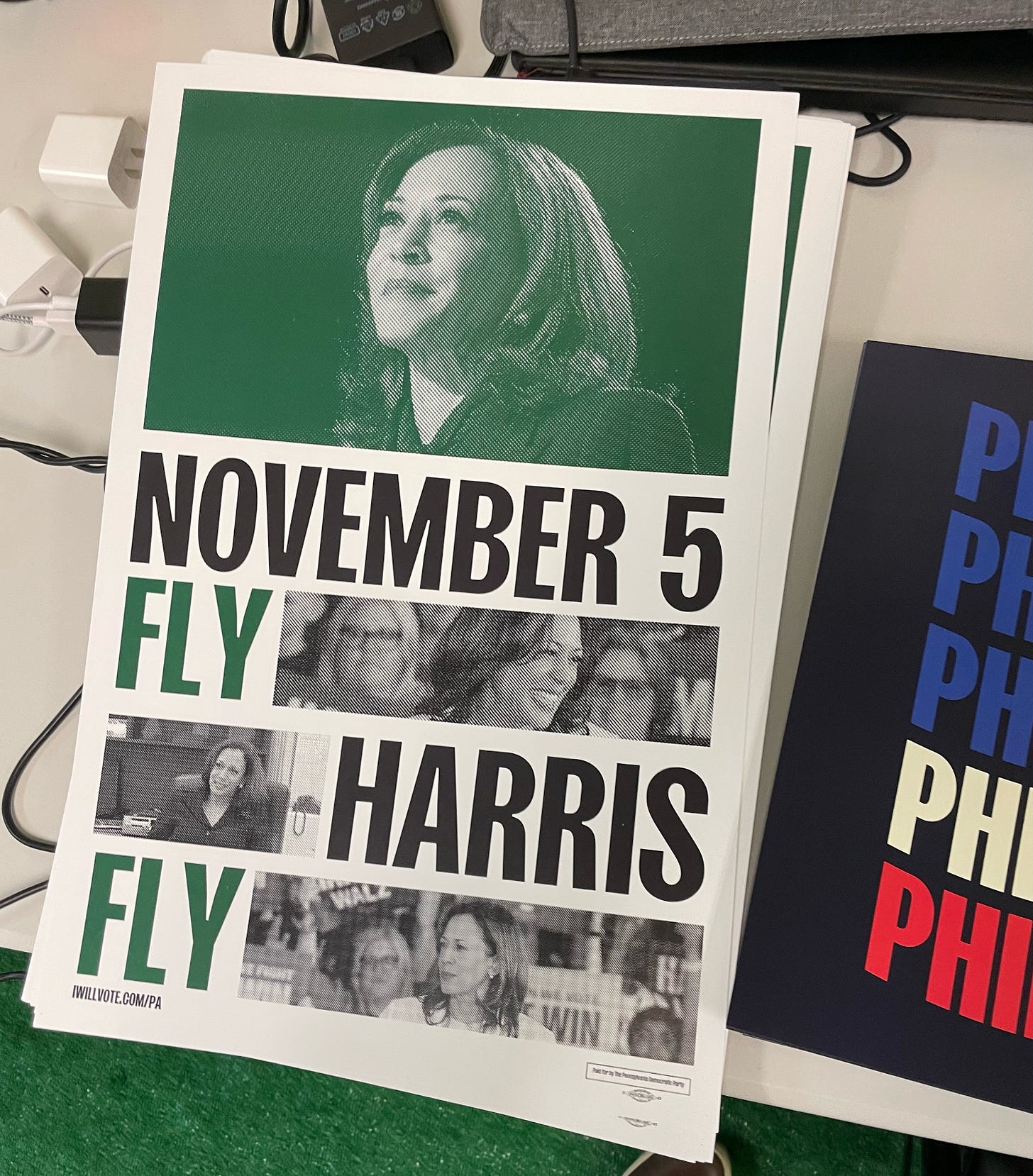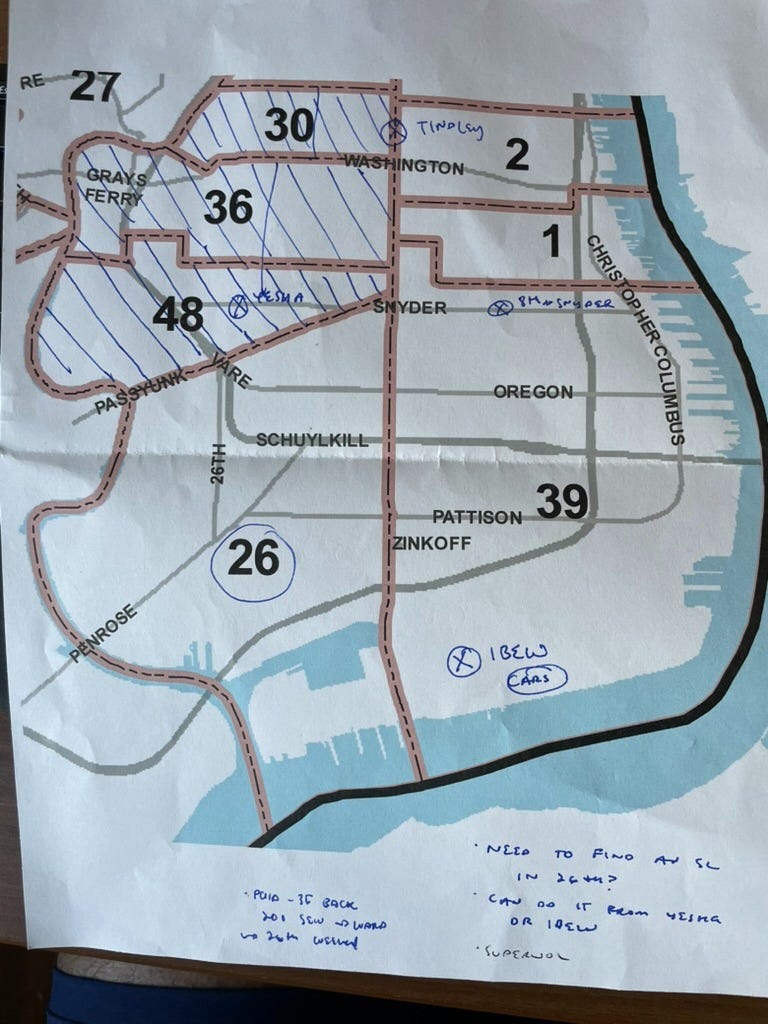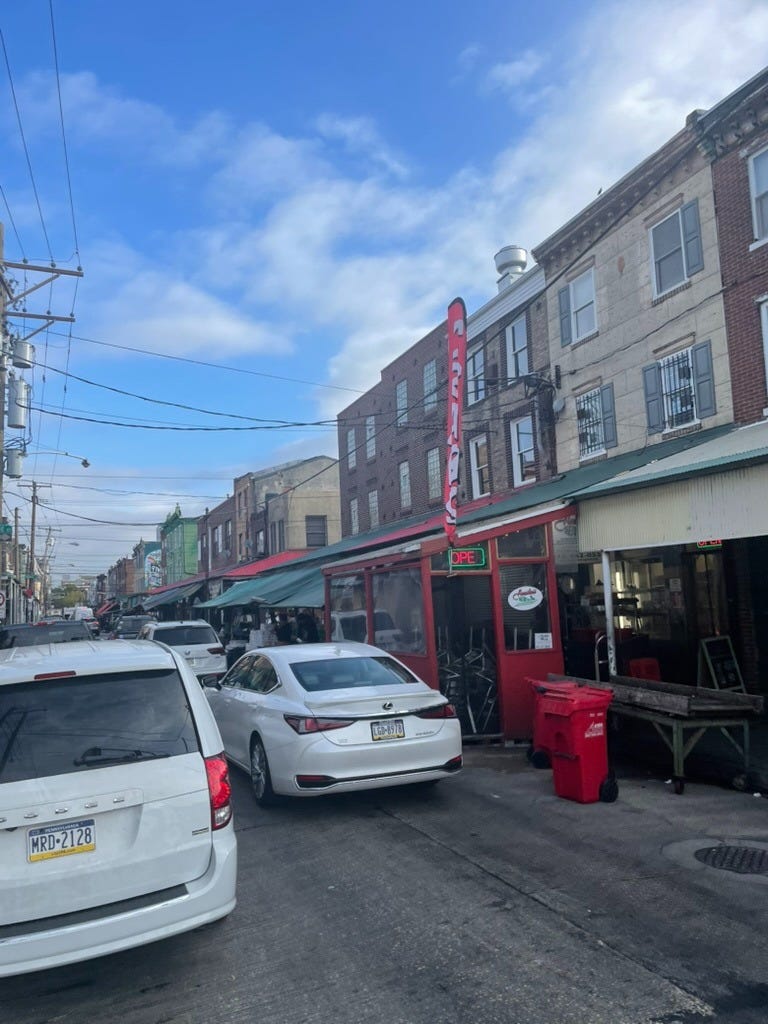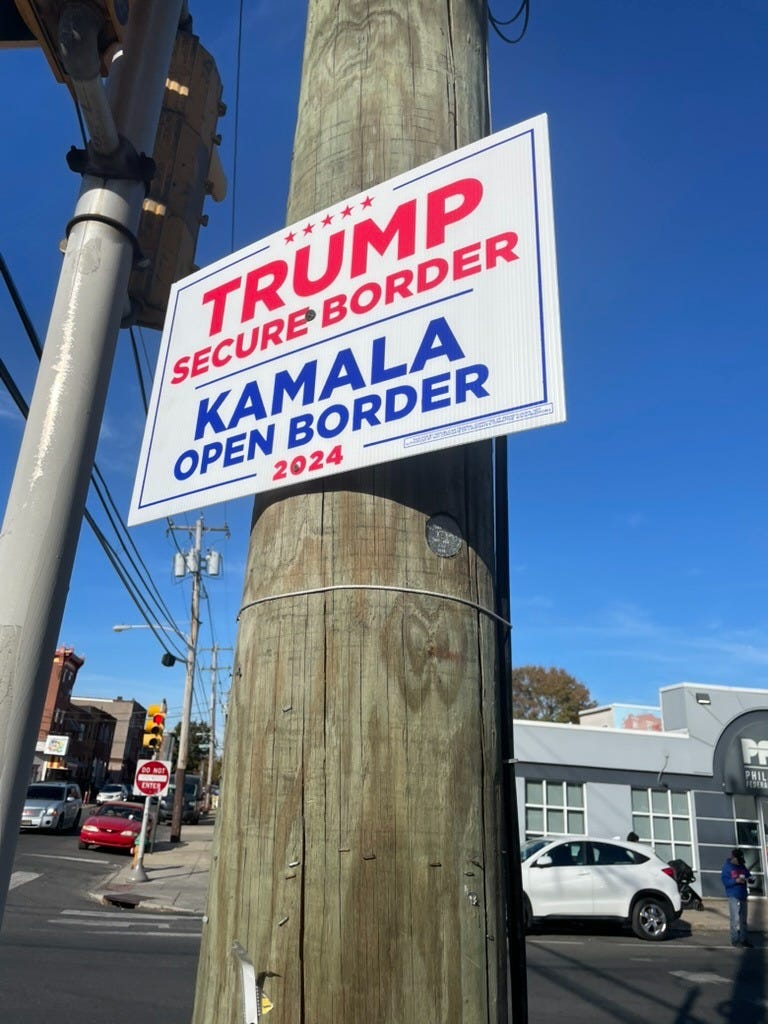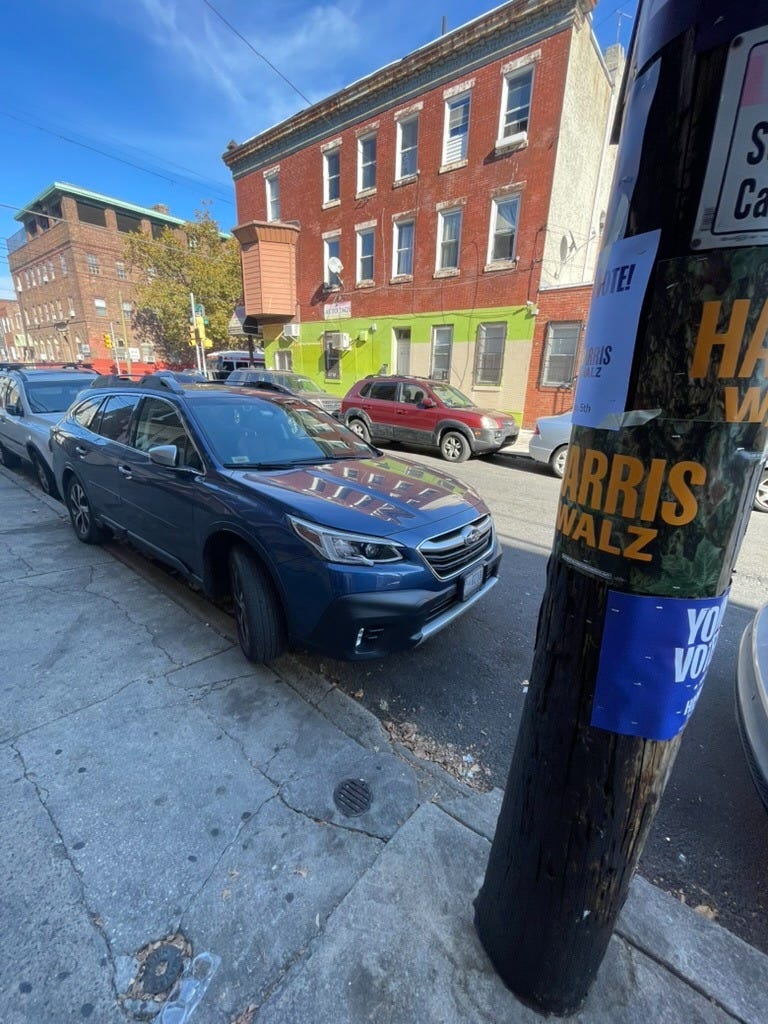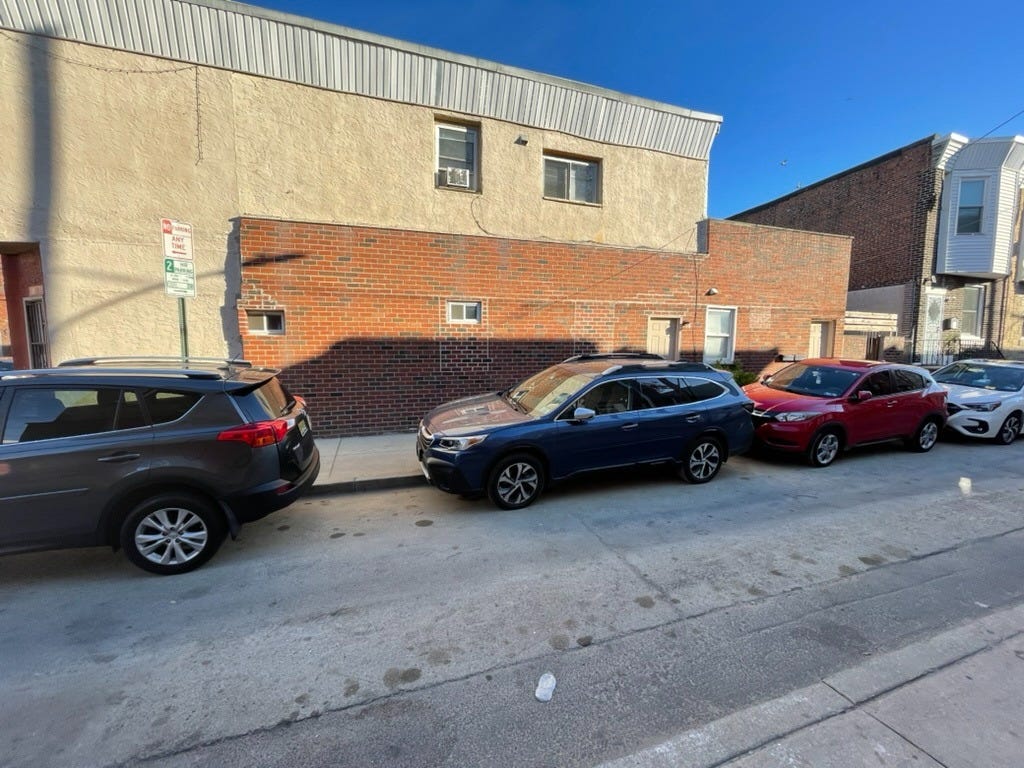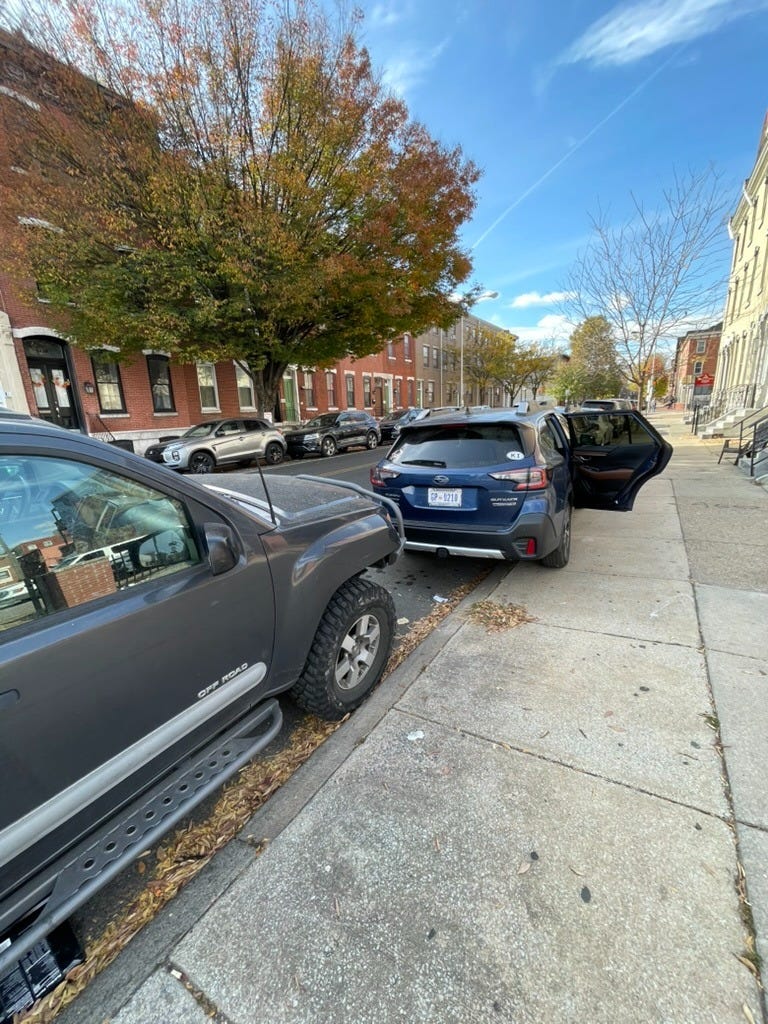35 Days: Part 2
The Commonwealth of Pennsylvania, Married to Philadelphia, and South Philly.
Part 2 of my reflections on my 35 days on the Harris campaign doing GOTV in South Philly. Part 1 is here.
Good luck to everyone GOTVing tomorrow/today. If you live in VA, NJ, NYC, or CA find your polling place at iwillvote.com and make a plan to vote!
The Commonwealth of Pennsylvania
In 2008, when I was in Pennsylvania for GOTV, we said it the state that could “close the door,” because if Obama won Pennsylvania it shut the door on McCain’s ability to realistically win 270 electoral votes and win the election. Sixteen years later, the situation was reversed, as the list of competitive swing states narrowed, the math was nearly impossible for Harris to win without Pennsylvania.
Pennsylvania was part of the Blue Wall that included Michigan and Wisconsin that fell in 2016 to Trump. Biden won back the Blue Wall and newly competitive swing states of Arizona and Georgia in 2020. In 2024, as October began, we hoped that all the swing states were on the table, giving Harris multiple paths to 270 electoral votes and victory. But as the weeks progressed it became clearer that the fight was for the Blue Wall and Pennsylvania most of all.
In 2024, with New Hampshire and Virginia having moved off the board as swing states over the last few cycles, Pennsylvania was the only swing state left in the mid-Atlantic and northeast. It was clearly the center of the campaign with polling showing a close and competitive election. It was where I wanted to be, at the center of the action.
I had a history with Pennsylvania and presidential campaigns.
In 2008, having missed my opportunity to join the Obama campaign in the primary, I joined up to help run GOTV for York, Pennsylvania in the final week of the campaign. The Obama 2008 primary and general election field campaign, and the improvements in 2012, set the blueprint for Democratic field campaigns for the next sixteen years (you can read about it if you’re interested in this book “Groundbreakers: How Obama’s 2.2 Million Volunteers Transformed Campaigning in America”).
In 2020, I took leave from my job, moved to Lancaster, Pennsylvania with my wife and good friend Nate (remember that name it’ll come up again) to help run GOTV for the final weeks of the campaign. That year, due to COVID, the campaign didn’t get out on doors until September, so it felt like we were constantly behind on getting the field program stood up, and the field operation was run entirely outdoors to minimize the risk from COVID.
In 2024, when begging the campaign to let me join, I told the campaign that I would go anywhere in the state that they needed but it would be easiest for me to go to Philadelphia, because I had free housing there with my in-laws. I knew this was a bit of an obnoxious request. Most people who volunteer to join a campaign want to go to a big city like Philly because it’s more fun, or because they have friends there, or because it’s more like where they’re from. It’s a lot harder to find people willing to go to the other non-big city parts of the state, like York or Lancaster or even further afield like Erie.
But as someone who was taking unpaid leave from his job to take an unpaid job on the campaign, that free housing would make my life easier, though I would be fair to say I would be paying in ways other than money when I lived with my in-laws.
In September I got the call from the campaign, they wanted me in Philadelphia. South Philadelphia to be exact. I was deploying to my wife’s homeland of Philadelphia.
Married to Philadelphia
I am married to a multi-generation Philadelphian. And I do not mean someone who grew up in the suburbs and says they are from Philly. My wife was born and raised in downtown Philadelphia. To love my wife was also to love Philadelphia, a true package deal.
To give you a sense of how deep my wife’s roots in Philly are, over the course of 50 or so years, my wife’s parents went to medical school (father), worked, lived, went to synagogue, gave birth to, and raised their two children in a roughly ten block radius of downtown Philadelphia.
My wife is such a Philadelphian that when I showed her the famous clip from Always Sunny about Charlie not understanding the concept of Pittsburgh or there being other cities in Pennsylvania she did not understand why it was funny.
My wife is such a Philadelphian that upon seeing “Hamilton” for the first time, from a fellow Wesleyan alum, she spent hours raging about how Philadelphia and its role as the first capital of the United States had never been mentioned in the play.
My wife is such a Philadelphian that even though she doesn’t really follow sports the moment a Philly team makes the playoffs she transforms into the most obnoxious Philly fan you have ever met (“I am a fan of Philadelphia” she will say). Despite my best efforts at raising a child in Washington DC my daughter screams “FLY EAGLES FLY” and wears a Phillies track jacket.
Over the course of my marriage, I have come to love the city and people of Philadelphia, and I am not just saying that so I don’t get in trouble. There’s no city that I have been to in America that feels like so many different parts of a city, and America, in one place other than Philly. And the people of Philadelphia have a love of their city that really straddles the line between prideful and psychotic.
Once, while vacationing in the U.S. Virgin Islands, we were at dinner and our waiter and my wife both discovered they were from Philadelphia. The waiter said with a fond look on his face, “Ahh I miss Philly, that’s a city that loves to hate you back.” I am not sure I have ever heard a better encapsulation of the city and its people.
Beyond my general fondness for Philly, more importantly, my in-laws were preparing to sell their home of fifty plus years in Center City which meant it was mostly empty, free, and just two blocks from South Street and South Philly.
South Philly
South Philly technically begins on South Street in Philadelphia, though some will argue that it more spiritually begins further south on Washington Ave. It runs south from South Street bracketed to the west by the Schuylkill River and to the east by the Delaware river, down to the Philadelphia Navy Yard. Broad Street runs the length of the City of Philadelphia north to south, and bisects a large part of the city.
I have run the Broad Street Run, one of the great road races in America, a few times. It runs down Broad Street for ten miles starting in North Philly and ending at the Naval Yard at the tip of South Philly, on a course that stays on one road with a single curve around City Hall. As you run down Broad Street into South Philly you see the city start to change, the row houses and historical buildings shift you leave Center City, to the newer buildings and a giant Target along Broad, to more older row houses, to spread out warehouses and industrial areas, to the stadiums, and then the Navy Yard. This was South Philly.
My first introduction to my turf was this map on the Regional Organizing Director’s laptop.
South Philly was Region 29 in the Harris-Walz/Pennsylvaia Democratic Party Coordinated Campaign nomenculture, the 29th of the 29 regions that we had divided Philly into. Technically our turf was Wards 1, 2, 26, 30, 36, 39, 40, and 48 though some of that was with paid canvass (a point of contention in the campaign at points).
There are five regions that make up Philadelphia: North Philly, Northeast Philly, Center City, West Philly, and South Philly. We formed a pod that would become like family for the next month.
This is the map I created of my turf and carried around with me on my clipboard for those 35 days.
There were high income wards up north, gentrifying wards, African-American wards, historically Italian-American wards and the Italian Market, Pats and Genos, the stadiums, the Navy Yard, even the area by the airport which was composed of many recent African immigrants. It was the most spread out turf in Philadelphia, requiring a car to reach large parts of it, in addition to having dense urban areas.
I was a stranger to South Philly, as was too much of the field organization on the campaign, a constant (and fair) criticism of the campaign and Democratic campaigns over the recent years. There were already strong reps and organizing in South Philly from State Reps like Elizabeth Fielder and Jordan Harris to State Senator Nikil Saval and organizations like the South Philly Voter Project.
I was an outsider to South Philly but the beauty of being an outsider is that sometimes it’s actually an advantage. You can show up, apologize because you’re new, demonstrate some baseline competence, and ask for help. And most of the time you’ll get it because it’s election season, everyone wants to win, and you’re just the guy who got sent here. Plus most people don’t have anything to be angry about with you personally (I will later earn that anger but also give and gain many favors).
I loved exploring South Philly. I would get up in the mornings and go for a run through my turf, using the time and miles to learn some of my turf from the ground up, scouting out various potential staging locations, and just soaking the fall weather in. It was hard at times not to feel like Rocky running through the streets of South Philly in the morning.
But there were constant reminders that this was a campaign, not a cakewalk, and that we were not the only ones on the ground in South Philly.
Tomorrow: 35 Days: Part 3
PS - South Philly taught me many things but perhaps none more than how to be a truly deranged parker and its tradition of parking on sidewalks. Here are some of my favorite sidewalk parking jobs from my photo roll.


